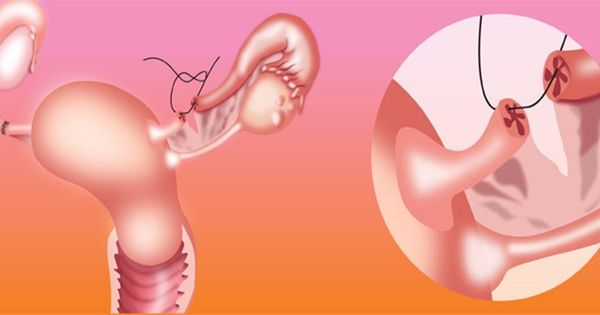
You concluded you were done having kids and got a tubal ligation to prevent you from conceiving again. However, you started to have second thoughts, and now ponder if having another baby is even conceivable after a tubal ligation. The great news is that a tubal ligation can be reversed. The experts at California Center for Reproductive Health are professionals in reversing all forms of tubal ligations. Utilizing minimally-invasive techniques, most of their procedures are highly successful and efficient. To learn more about Santa Monica tubal reversal, call the office or request an appointment online today.
What Exactly is a Tubal Ligation?
Pregnancy usually begins once a woman releases an ovum from one of her two ovaries. The ovum then travels to one of her two fallopian tubes, where the male’s sperm swims and fertilizes it, resulting in conception.
Tubal ligation prevents pregnancy by cauterizing or tying the fallopian tubes, preventing conception. This method prevents the sperm from reaching the ovum.
What Exactly is a Tubal Reversal?
For fertilization to occur, the male’s sperm must meet the ovum. Therefore, to successfully reverse your tubal ligation, your specialist will eliminate any damaged parts of the fallopian tubes and then reattach the ends together.
Tubal reversal is performed laparoscopically, meaning the procedure is minimally intrusive and requires only a few minor cuts. Your surgeon begins by making tiny cuts in your abdomen. Then, via the cuts, he drives a tiny camera and small equipment.
The camera will reveal high-resolution images on a monitor, and your surgeon will conduct the operation using this detailed vision; thus, enhancing accuracy and precision. Furthermore, minimally-invasive surgery enables a speedier recovery. You can return home several hours following the procedure, and your recuperation should only take a week.
How Efficient is a Tubal Reversal Procedure?
A tubal reversal’s effectiveness could be affected by various circumstances, including:
§ Age
Younger women have a higher success rate. In fact, tubal reversals are effective in 70-80% of women under 35 years. On the other hand, only 30-40% of women above 40 years benefit from this procedure.
§ The Type of Ligature
The sort of ligation you had could also play a role since the less destruction the ligation causes to the tubes, the higher the chances of a successful reversal. For instance, if you had your ligation done with tubal rings or clips, there will most probably be sufficient viable tissue to deal with; hence, boosting your chances of a successful reversal.
However, other procedures, like those that depend on scarring to seal the fallopian tubes, might leave less tissue to work with.
§ Other Considerations
Other variables could also have an impact on your capacity to conceive. These include overall fertility wellness, obesity, and your partner’s sperm health. Besides, medical concerns like scar tissue from past pelvic surgeries or autoimmune illnesses might make it difficult for you to conceive.
Are you considering tubal reversal and wish to determine if it is right for you? Contact California Center for Reproductive Health to talk to Dr. Eliran Mor and Dr. Irene Woo and find out how they can help.

Comments are closed.